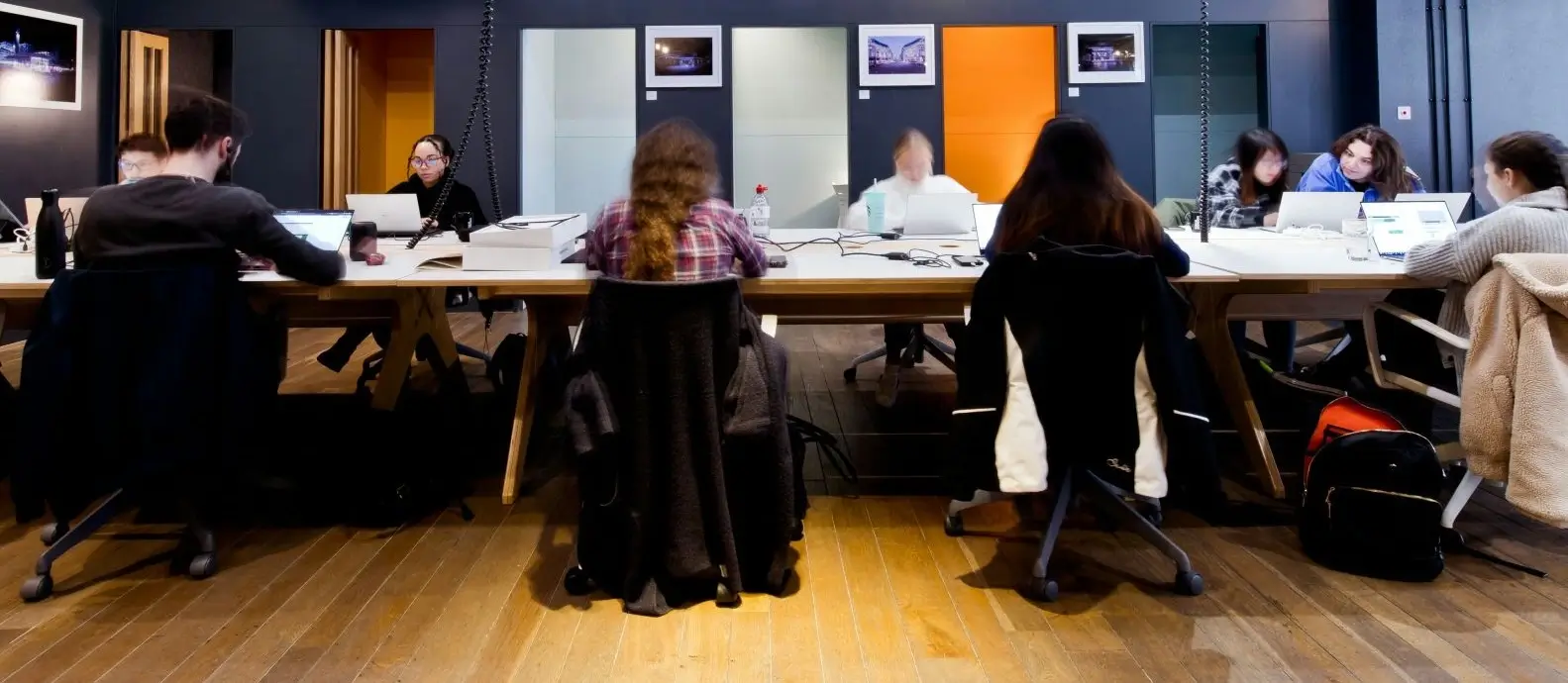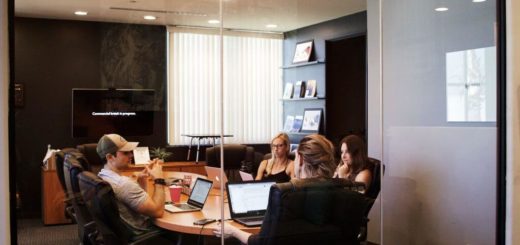Team Productivity in Project Settings through Workplace Improvement

Employee productivity in project-driven workspaces is crucial for maintaining competitive advantage and operational excellence. Effective workplace organization goes beyond physical arrangements—it includes structuring work processes, project management methodologies, and the supportive organizational culture that underpins these efforts.
Project environments demand cross-functional collaboration, adaptability, and swift responses to changes, making workplace organization a critical factor in enhancing or hindering team productivity. This idea extends to cultural and procedural frameworks that influence how project teams and individuals interact with their tasks and each other.
In this blog, we discuss how effective workplace settings, when combined with a supportive culture, can enhance team productivity in project settings. We explore workspace organization strategies that can help project managers enhance teamwork and performance.
The Impact of Work Organization on Team Dynamics
The physical and behavioral components of the work environment play crucial roles in shaping employee productivity. These factors can significantly influence team dynamics and overall success in project environments.
For instance, the physical layout of the workspace can affect communication flows, collaboration opportunities, and the general well-being of the team members, which are vital for the fast-paced and collaborative nature of project work.
Here are seven impacts of work organization on team dynamics in project management settings:
- Streamlined Communication: Well-designed co-working spaces enhance clear and effective communication among team members, which is crucial for coordination and the successful execution of tasks.
- Enhanced Collaboration: Strategic organization of work environments facilitates better collaboration by providing spaces conducive to group discussions and brainstorming sessions.
- Resource Availability and Accessibility: Effective organization ensures that all necessary resources are readily accessible to all team members, reducing downtime and enhancing overall efficiency.
- Flexibility and Adaptability: Adaptive work environments catering to project teams’ diverse needs can lead to more innovative solutions and flexible problem-solving approaches.
- Conflict Reduction: A well-organized workspace can reduce conflicts by clearly defining personal and shared spaces, thus effectively managing team interactions.
- Cultural Alignment: Organizational culture is reflected in how workspaces are designed and utilized, reinforcing values such as openness, transparency, and mutual respect among team members.
- Task Efficiency: The layout of a workspace can influence the speed and quality of task completion by minimizing distractions and optimizing the flow of information.
6 Workplace Improvement Strategies for Project Teams
1. Utilize Technology and Tools
Leverage technology to streamline processes and improve efficiency. Tools that facilitate project management, collaboration, and communication can significantly reduce time wasted and enhance team productivity.
Here is an action items list for you:
- Protective and Functional Gadgets: Provide employees with high-quality phone cases, such as those from GetCasely, to protect their mobile devices. These prevent device damage and minimize the distractions caused by device malfunctions. Ensuring that employees’ equipment is well-protected is a small but crucial aspect of maintaining productivity.
- Digital Organizational Tools: Utilize digital tools like Trello, Asana, or Microsoft Teams to keep tasks organized and ensure everyone knows their responsibilities and deadlines. These tools help maintain clear and accessible digital workspaces.
- Physical Workspace Organization: Invest in physical organizers and modern filing systems to keep the office space uncluttered and conducive to focused work. An organized physical environment reduces stress and improves efficiency, as employees spend less time searching for materials and more time on productive tasks.
2. Foster Employee Well-Being
Christian Krekel’s productivity research highlights the importance of employee well-being in balanced working environments. He suggests implementing programs and practices that promote employee well-being, as there is a strong correlation between employee satisfaction and performance.
For example:
- Deloitte offers a “Time Out” program, allowing employees to take an unpaid leave of absence for up to four weeks each year, no questions asked. This initiative has been linked to higher employee satisfaction and retention rates across various research projects at Deloitte.
- Asana offers employees access to wellness funds, which can be used for gym memberships, fitness classes, or wellness apps. Studies have shown that teammates who participate in wellness programs are 8% more productive than their peers.
3. Promote Flexible Work Arrangements
Implement flexible work policies that specifically cater to the needs of project teams. This flexibility can increase productivity, lower stress levels, and higher job satisfaction, which is particularly crucial in dynamic project environments.
For example, many IT companies like GitLab operate with a fully remote workforce. This allows project teams to work from locations that suit them best, enhancing focus and efficiency on project deliverables.
Also, some firms implement compressed workweeks during intense project phases, offering longer breaks once significant milestones are achieved. This program has been shown to maintain high energy levels and motivation across project teams, which is crucial for sustaining momentum in project completion.
4. Optimize Physical Workspaces
Design physical workspaces that are adaptable and conducive to your teams’ needs. This involves ergonomic designs, appropriate environmental controls, and spaces that foster collaboration and creativity.
For instance, Facebook and IDEO use modular workstations that can easily be reconfigured based on the needs of every individual, promoting collaboration and flexibility. These companies also offer dedicated project rooms where teams working on specific initiatives can brainstorm and work without interruptions.
5. Develop Leadership in Project Settings
You want to focus on cultivating leadership skills among teammates, which are critical for managing dynamic project environments. This includes training on project-specific leadership competencies, such as risk management, agile methodologies, and team dynamics.
Follow these ideas:
- Training Programs: Create tailored training programs that focus on developing skills in agile project management, stakeholder communication, and conflict resolution.
- Mentoring and Coaching: Establish a mentoring system in which experienced project managers coach newer leaders. This approach has been used effectively in organizations like IBM, where it has improved success rates and helped develop team members personally.
- Leadership Feedback Mechanisms: Implement regular feedback loops for project leaders, using 360-degree feedback tools that allow team members to provide input on leadership effectiveness. This feedback is crucial for ongoing improvement and is often integrated into leadership development programs at firms like Deloitte.
6.Enhance Environmental Comfort for Project Teams
Finally, it would help if you improved the physical environment of project spaces to enhance comfort, reduce stress, and increase productivity. This involves adjusting factors such as temperature, lighting, and ergonomics tailored to the needs of project teams.
- Temperature Control: Ensure that project areas are equipped with adjustable temperature controls. Google’s offices, for instance, allow teams to adjust their environment to what’s most comfortable for them, recognizing that comfort can boost concentration and efficiency.
- Advanced Lighting Systems: Implement lighting systems that can be adjusted according to the time of day and individual preferences. Philips Lighting offers solutions that mimic natural light patterns, which have been shown to improve mood and energy levels, crucial for long project hours.
- Ergonomic Project Stations: Equip project rooms with ergonomic furniture, including adjustable chairs and standing desks. Salesforce provides these in their offices to prevent physical strain during extended periods of sitting, which is common in project-intensive work.
- Noise Management: Use sound masking technologies to minimize disruptive noise or design project spaces with sound-absorbing materials. Companies like Herman Miller utilize acoustic solutions in their design to create a quieter workspace that enhances focus for project teams.
- Relaxation Zones: Create designated areas within or near project environments where team members can take short breaks to decompress. Apple’s new campus includes indoor and outdoor relaxation spaces accessible to teams for quick mental breaks.
Wrapping Up
Effective workplace organization can enhance team productivity in project-driven environments. Organizations can improve collaboration and well-being by leveraging technology, optimizing workspaces, and promoting flexible arrangements and leadership development. These strategies boost project outcomes and foster innovation, maintaining competitive and operational excellence.











